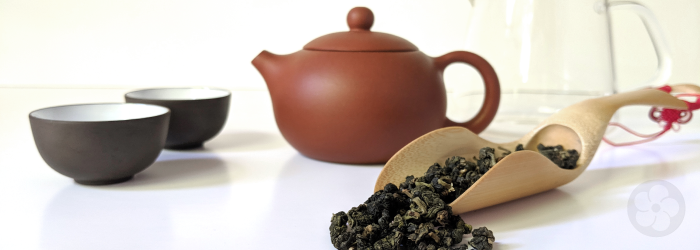What is a Chinese Tea Ceremony?

Among tea enthusiasts, much has been said about the “right” way to brew tea. Beyond the general consideration of leaf quantity, time, and temperature, many people believe the proper methods have been codified in a set of techniques to create a ceremonial presentation of Chinese tea.
However, this idea erroneously conflates common brewing techniques with the highly specific traditions of the Japanese Tea Ceremony, and leads to the misconception that brewing tea is somehow very difficult, or must be studied extensively to perform successfully. In fact, the process most people call the Chinese Tea Ceremony is better named as gong fu cha, which translates most directly as “tea with effort”. In contrast to the strict, long-standing traditions of the Japanese Tea Ceremony, the so-called “rules” of gong fu cha are best thought of as guidelines to help achieve the best tasting brew and get the most flavor out of every tea leaf.
Check out our step-by-step guide to brewing gong fu cha >>
What is a Tea Ceremony?
After the introduction of tea to Japan during the Tang Dynasty, isolationist policies cut off the free flow of ideas between China and the island state, leading to the development of an utterly unique tea culture.
Tea was a rare commodity in isolationist Japan, where domestic growing conditions were not very friendly to the Camellia sinensis plant and international trade was highly restricted. Here, tea was reserved for the nobility, and retained its older, powdered form even as Chinese tea production shifted to whole leaf varieties.
Over time, the Japanese Tea Ceremony developed into a highly formalized ritual of service, through which the tea master could demonstrate his certified skills in aesthetic decor, courtly manners, and practiced whisking techniques. As the shogunates rose to power, these traditions grew to encompass bonding rituals as well, such as the practice of passing a single bowl around to each guest, who would sip and rotate it an exact quarter turn before passing it on.
Meanwhile, in China, widespread growth of the tea plant led to the adoption of tea as an everyday beverage for all classes. While Chinese literati debated the merits of terroir, water quality, and specific brewing techniques, working class Chinese tea drinkers developed regionally specific brewing methods to help make the most of their tea leaves.
Song Dynasty scholars famously held competitions to compare brewing techniques, and their methods used compressed-leaf teas that were ground into powder, much like the high quality matcha teas still used in the Japanese Tea Ceremony. But the brewing techniques used for whole leaf teas, like those we see today, are more closely related to those used by working class men. These workers would carry a small teapot full of leaves with them, ready to brew during short breaks, and devised specific methods of packing leaves into a small teapot to maximize the flavor yield.
Tea Ceremony vs. Gong Fu Cha
Today, Chinese teas are almost never powdered, and the styles of Song Dynasty literati have fallen out of favor. Instead, modern brewing techniques are based on the brewing methods developed by the working classes. Rather than show off the aesthetic taste and brewing skill of the server, they are calibrated to reveal the quality of the tea itself.
Primarily, this is because the common modern form of gong fu cha was developed for commercial appeal in the early days of Taiwanese tea production. By borrowing and combining methods from disparate regions, early tea exporters devised a process that would impress customers with showmanship - specialized equipment, a series of rinses, and a dramatic pour gave the impression of expertise and exoticism. More importantly, in brewing the tea multiple times, sellers could reveal the quality of their tea by demonstrating developments in flavor.
As tea spread across the world, the methods of this modern gong fu cha became more widespread, and have since been adopted in many parts of mainland China. While plenty of variation still exists between regions, techniques can also vary based on individual preferences. Because the process is designed to highlight tea quality, rather than enforce social norms, the focus remains on the flavor, rather than ceremonial rules. Today, the only context in which a Chinese tea service is considered truly ceremonial is at a wedding.
Have you taken part in a Tea Ceremony? Tell us about your experiences in the comments below!
Sign up for our newsletter to get blog updates in your inbox!







Comments on this post (1)
Hi there, ive never taken part in any tea ceremony, but i love the tea culture and collect alot of teas. i love the aroma of tea as i brew it whilst i play traditional Chinese music. it kind of transcends me back in time. Ive never had the chance to go to China or be part of a ceremony but id love the experience i thought your post was insightful and interesting.
— Craig Thomas